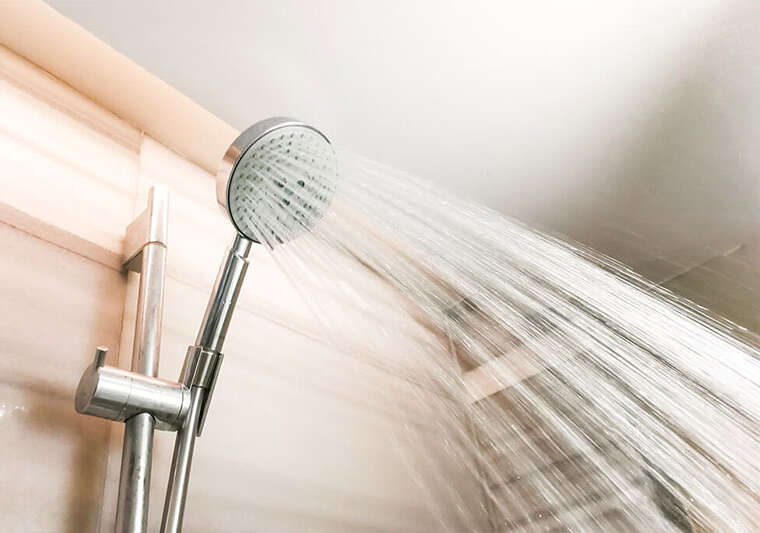Just got back from an interesting legionella risk assessment at a hotel in Birmingham. Having contacted us through our website, the hotel chain have ordered legionella risk assessments for all of their hotels, informing us that they already have a good legionella control regime in place in each hotel.
Using guidance contained in ACoP L8 and HSG 274 and following BS8580:2010, I surveyed the entire building, inspecting all accessible pipework and plumbing fittings in order to assess the risk of legionella developing within the water systems. The plumbing, which included a large cold water storage tank and a series of unvented water heaters, had been fitted around 4 years ago and for a hotel of this size was designed to be very effective in limiting the growth of bacteria. The tank and water heaters were regularly used and all plant complied with the Water Regulations 1999.
As with many working kitchens, I found a number of deadleg pipes on the hot and cold system, which had been left capped-off when appliances had been moved around the kitchen. My legionella risk assessment noted that these dead pipes must be removed as they can provide a stagnant water-filled breeding ground for the legionella bacteria which is capable over time of colonising other areas of the water system with legionella bacteria. All appliances, however, were regularly used and serviced according to manufacturers’ guidance. The legionella risk assessment also advised of a number of other modifications that could be made to the water system to reduce the risk of the legionella bacteria, and within what timeframes they should be carried out.
When I asked for the records of the hotel’s legionella control regime, however, I was shown a single A4 leaf of paper with a grid for taking monthly temperatures from random hot and cold taps around the building to ensure the cold water runs below 20°C within 2 minutes and that hot runs above 50°C within 1 minute. The hotel did not carry out any other duties in regards to legionella control.
Temperature monitoring is something that hotel should be doing, but it should be done in much more detail: on a monthly basis, the hotel’s responsible person should be testing the ‘nearest and furthest taps’ (‘sentinel outlets) from each water source (ie the nearest and furthest taps from the cold water storage tank, the nearest and furthest taps from the water heaters, and the nearest and furthest mains-fed taps from the mains stop-cock). Additionally, random outlets should be checked monthly, ensuring that by the end of a 12-month period all outlets have been checked at least once.
Furthermore, the hotel should have been carrying weekly flushing of any little used outlets – even temporary one (outlets that have not been used for more than 1 week). They should have been cleaning, disinfecting and descaling all showers and sprayheads on site and they weren’t – the legionella bacteria is transmitted to humans by inhaling water spores, and in a hotel like this the showers are the most likely point at which this will occur. By cleaning, disinfecting and descaling the shower heads and hoses then they would be removing scale and sludge which provide excellent shelter and nutrition for the legionella bacteria, and therefore reducing the risk caused by the bacteria.
The legionella risk assessment I produced advised the Birmingham hotel’s responsible person that they must carry out all of the above, as well as inspecting the cold water storage tanks and water heaters on a six-monthly basis, to check for faults or possible visible contaminants in the stored water. I also advised that when contaminants are seen to be affecting the water, a chlorination of the water system should be arranged in order to remove such contaminants.
There were a number of other duties that the hotel should have been carrying out on a regular basis, all of which were also advised in the legionella risk assessment.
By not carrying out these tasks, those in control of the hotel were not able to show that they had complied with the Health & Safety at Work Act 1974’s provisions for ensuring the health and safety of their staff and the public, and were therefore at risk of prosecution should a legionella outbreak occur. Furthermore, and much more significantly, the hotel were putting the health and safety of every employee and guest at risk by not carrying out a robust legionella control regime by exposing them to possible legionella bacteria growth which is not necessary and preventable. Moreover, the hotel manager was recorded as being the ‘Responsible Person’ for that particular hotel in Birmingham, and yet had no knowledge of this when questioned.
The fact that the hotel had a modern and relatively low-risk designed water system meant very little because they were not managing the risk effectively. The hotel’s manager was quite disturbed when I explained the findings of the legionella risk assessment, however, and has confirmed that as well as carrying out the few minor alterations to the plumbing advised, they will now be following the legionella control regime rigorously, ensuring the guests and employees at the hotel are exposed to the minimum risk of legionella bacteria possible.




